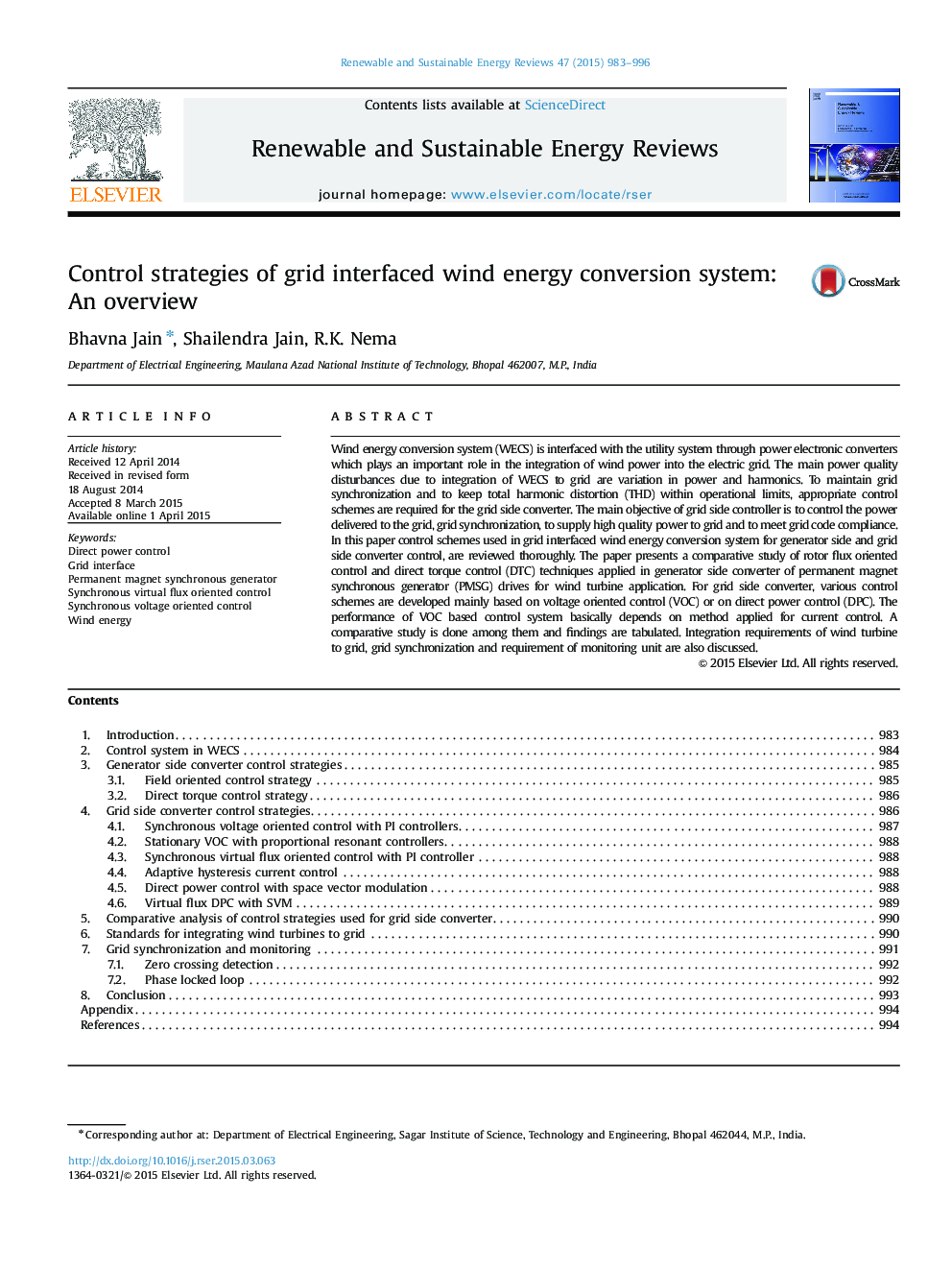| Article ID | Journal | Published Year | Pages | File Type |
|---|---|---|---|---|
| 8116946 | Renewable and Sustainable Energy Reviews | 2015 | 14 Pages |
Abstract
Wind energy conversion system (WECS) is interfaced with the utility system through power electronic converters which plays an important role in the integration of wind power into the electric grid. The main power quality disturbances due to integration of WECS to grid are variation in power and harmonics. To maintain grid synchronization and to keep total harmonic distortion (THD) within operational limits, appropriate control schemes are required for the grid side converter. The main objective of grid side controller is to control the power delivered to the grid, grid synchronization, to supply high quality power to grid and to meet grid code compliance. In this paper control schemes used in grid interfaced wind energy conversion system for generator side and grid side converter control, are reviewed thoroughly. The paper presents a comparative study of rotor flux oriented control and direct torque control (DTC) techniques applied in generator side converter of permanent magnet synchronous generator (PMSG) drives for wind turbine application. For grid side converter, various control schemes are developed mainly based on voltage oriented control (VOC) or on direct power control (DPC). The performance of VOC based control system basically depends on method applied for current control. A comparative study is done among them and findings are tabulated. Integration requirements of wind turbine to grid, grid synchronization and requirement of monitoring unit are also discussed.
Related Topics
Physical Sciences and Engineering
Energy
Renewable Energy, Sustainability and the Environment
Authors
Bhavna Jain, Shailendra Jain, R.K. Nema,
